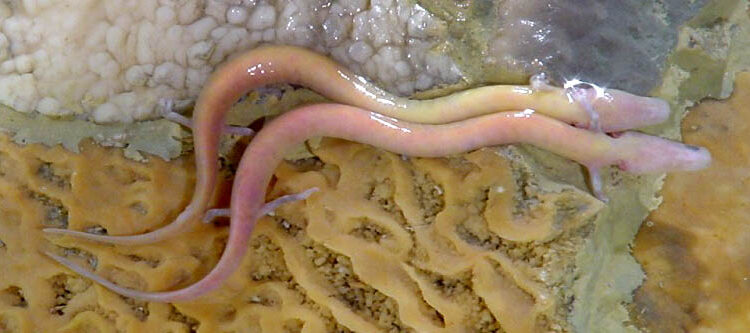
Discovering the Olm: Europe’s Hidden Wonder
The olm, also known as Proteus anguinus, is a remarkable aquatic salamander found exclusively in the subterranean caves of Europe. This enigmatic creature belongs to the family Proteidae and is the only species in its genus, making it truly unique in the animal kingdom.

A Life in Darkness
One of the most captivating features of the olm is its adaptation to complete darkness. Its undeveloped eyes render it blind, but this loss of vision is compensated for by highly developed senses of smell and hearing. This salamander’s skin is almost entirely devoid of pigmentation, giving it a translucent appearance.
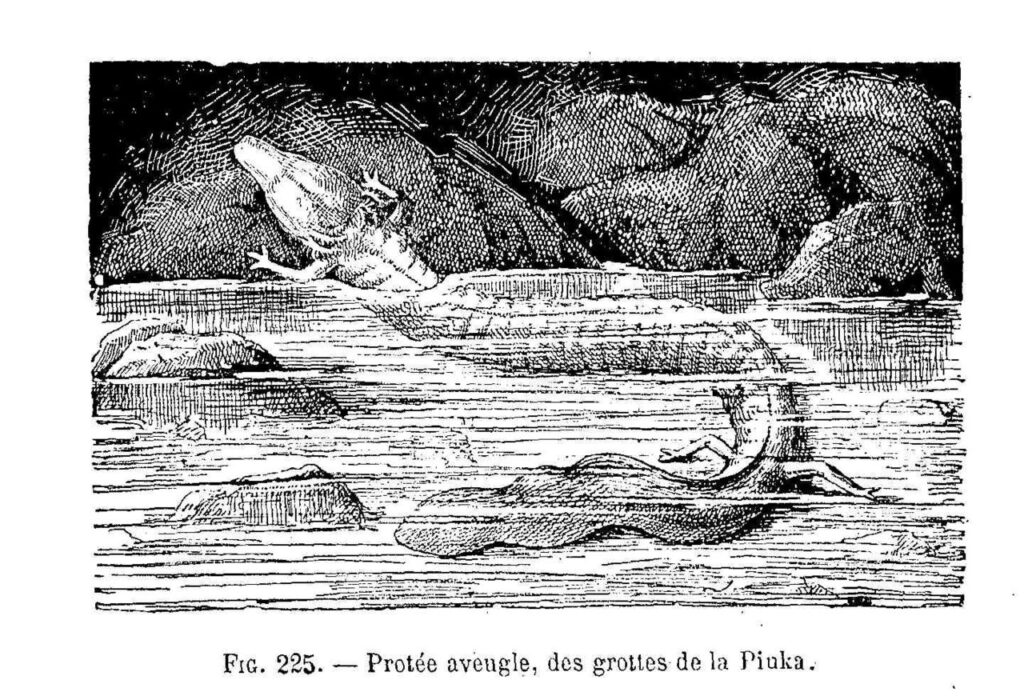
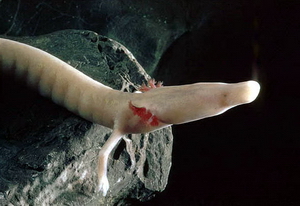
A World Below the Earth
The olm’s habitat is nestled deep within the limestone bedrock of the karst regions of Central and Southeastern Europe, including parts of Italy, Croatia, and Bosnia and Herzegovina. These cave-dwelling creatures are also found in introduced populations near Vicenza, Italy, and Kranj, Slovenia.
The Origins of a Legend
The olm has a long history entwined with local folklore. In 1689, it was first mentioned by the naturalist Valvasor, who reported that after heavy rains, olms would be washed up from underground waters, leading local people to believe they were the offspring of cave dragons.
Remarkable Adaptations
The olm’s appearance is strikingly unique. Its snakelike body can reach lengths of up to 40 centimeters, making it one of the largest cave-dwelling animals on Earth. Interestingly, females grow larger than males, with the primary difference being in the cloaca region during breeding.
The Olm’s Unique Features
- Skin Color: The olm’s skin is typically yellowish-white or pink, with the ability to produce melanin, which darkens when exposed to light.
- Head and Snout: Its head ends in a dorsoventrally flattened snout, while the mouth has tiny teeth that act as a sieve for capturing food.
- Breathing: The olm breathes through external gills that form two branched tufts at the back of its head.
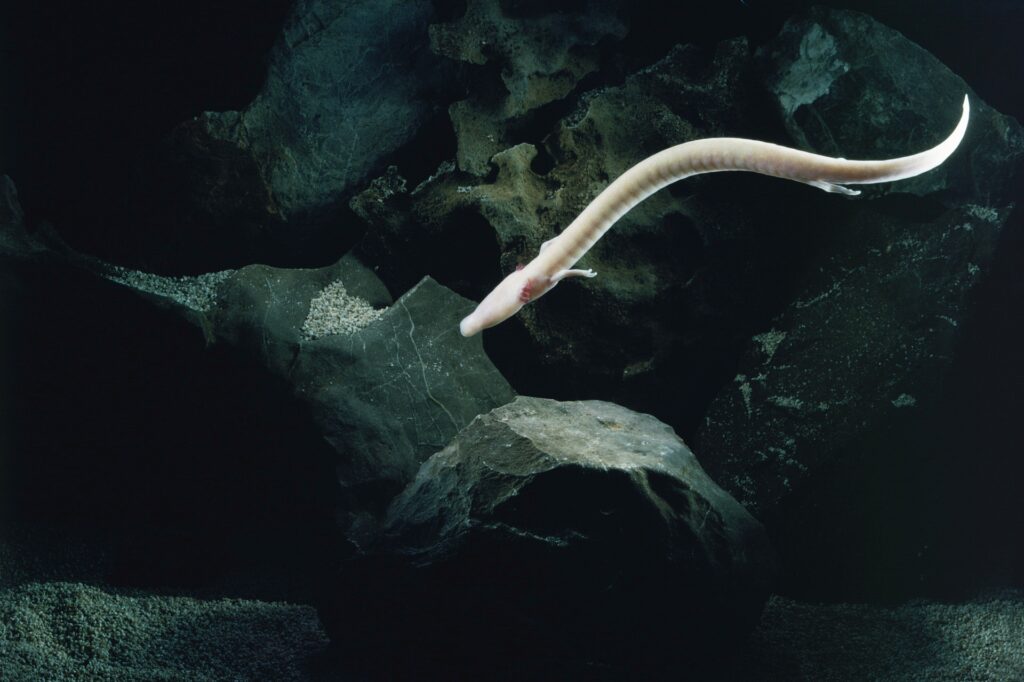
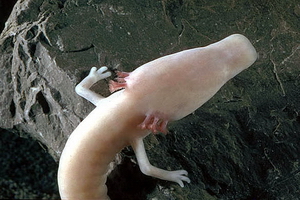
Sensory Marvels
Living in perpetual darkness has led the olm to develop exceptional sensory adaptations:
- Photoreceptors: Despite being blind, olms can sense light, and their skin is sensitive to it. This photosensitivity is due to the pigment melanopsin.
- Chemoreceptors: Olms excel at sensing organic compounds in water, particularly prey, thanks to their well-developed nasal epithelium and taste buds.
- Mechano- and Electroreceptors: They can detect low concentrations of organic compounds and register sound waves and vibrations in water. Additionally, they possess electroreceptors and may use Earth’s magnetic field for orientation.
Life in the Dark Waters
Olm’s thrive in well-oxygenated underground waters with temperatures typically ranging from 8 to 11 degrees Celsius. They are predators, feeding on small crustaceans, snails, and occasional insects. Remarkably, they can survive up to 10 years without food, thanks to their ability to store nutrients.

Breeding Secrets
Reproduction in olms has been observed in captivity, where males display courtship behaviors to attract females. Females can lay up to 70 eggs, protecting them between rocks. The tadpoles that hatch from these eggs are around 2 centimeters long.
The Longevity Mystery
Olms are known for their longevity, with some individuals estimated to live over 100 years. Their ability to retain larval characteristics into adulthood, known as neoteny, is one of the factors contributing to their extended lifespan.
Conservation Efforts
The olm faces threats due to habitat degradation and pollution, making conservation crucial. Various countries have enacted protective measures to preserve this unique species.
Cultural Significance
The olm is a symbol of Slovenian natural heritage and has played a role in the development of biospeleology. It is featured on Slovenian currency and has even inspired the name of a popular science magazine.
The olm, with its adaptations, longevity, and significance, continues to be a captivating subject for scientists and a testament to the wonders of Earth’s underground world.

Leave a Reply